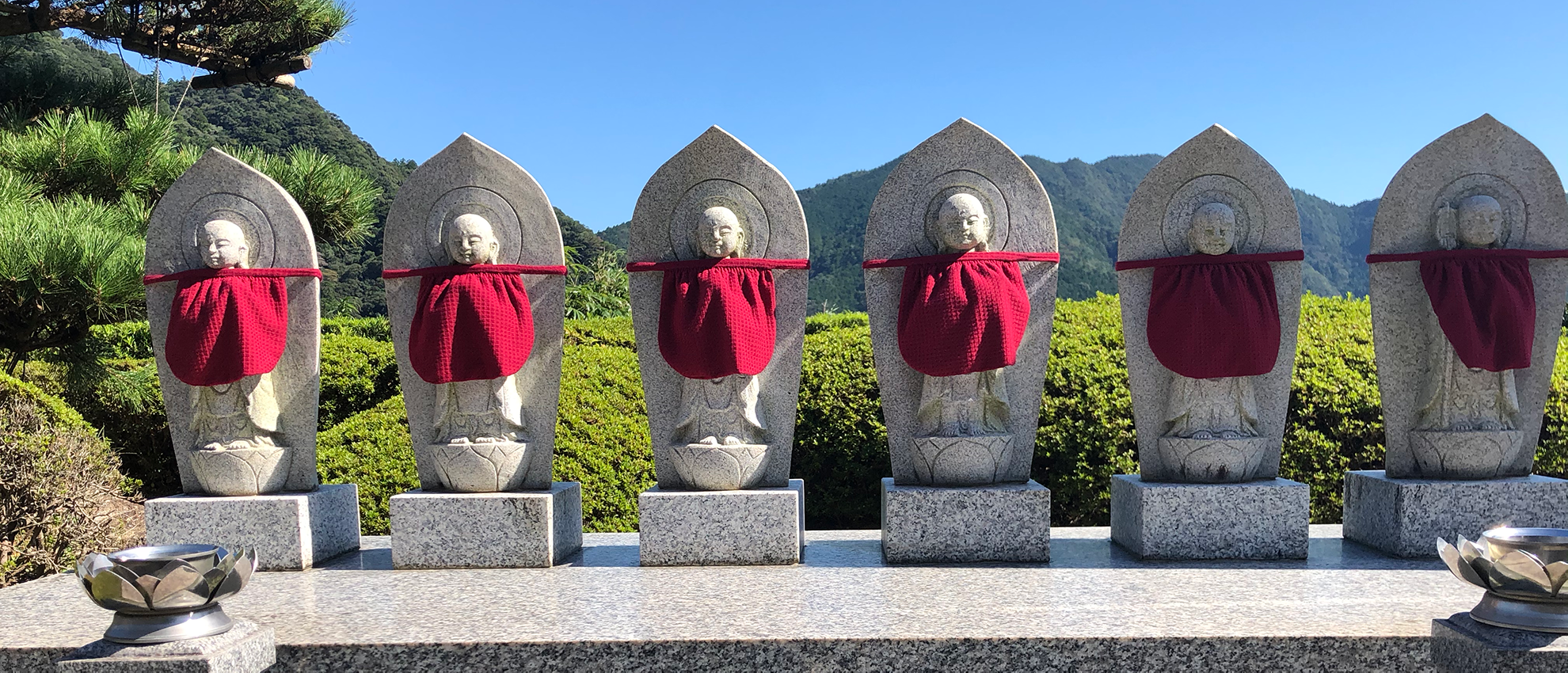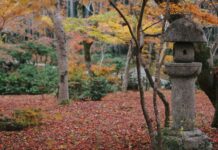As you journey across the Japanese countryside, riding the rails or walking the forest paths, there are a few things you’re likely to see time and again. One is the iconic torii, a red-painted wood or stone gate which marks the entrance to sacred Shinto ground. The other is the jizō, a stone statue of Buddhist origin which offers safety and protection to those travelling. The Jizō statue’s mythology runs deep in Japan and travellers appreciate his protection.
Japan has a complex and fascinating relationship with religion and theology. While none of the Abrahamic religions have captured Japan, the nation is still a spiritual place. Shinto is the religion native to Japan, but Buddhism is just as prevalent. Monks from China and Korea introduced Buddhism to Japan in the 6th century. This is why iconography from both Shinto and Buddhism is equally prevalent in Japan to this day. And one of those pieces of iconography is the Jizō statue. But what is Jizō, and what is his story?
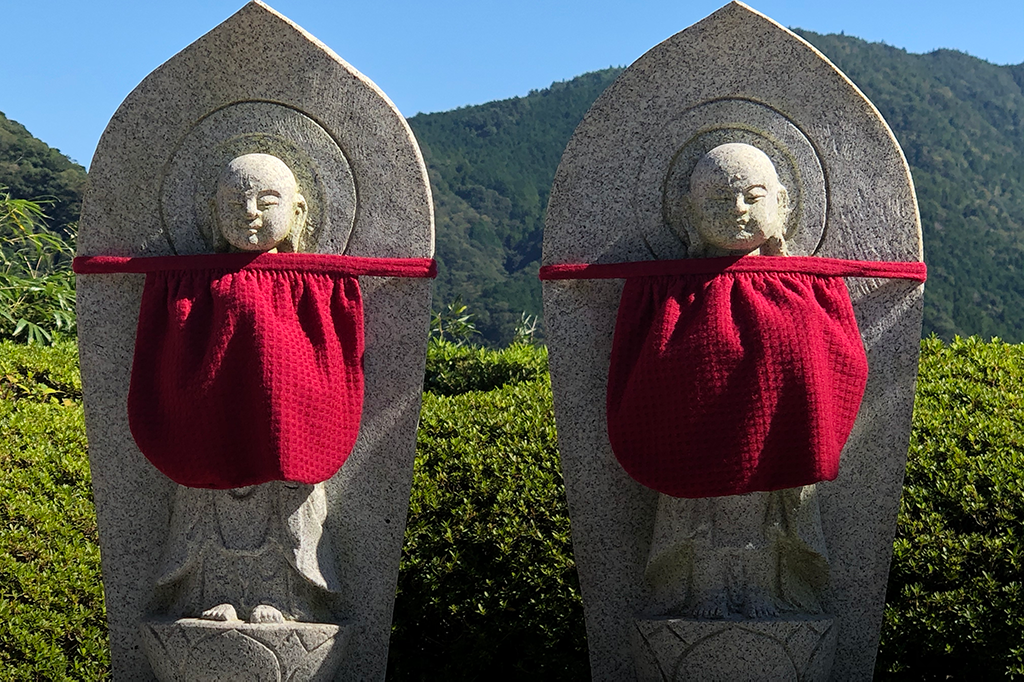
Origins of the Jizō Statue
Much like Buddhism itself, we can trace the story of the Japanese Jizō back to Tibet and India via China. Jizō’s Sanskrit name being Kṣitigarbha, many assume that his origins are to be found India. However, some scholars argue that his story began in China, since the oldest Jizō texts were written in Chinese, and no historian has ever found the original Sanskrit texts. Regardless, Jizō has remained a popular piece of iconography in Japan, as well as an invaluable aspect of Buddhist tradition.
Jizō is one of the four principal bodhisattvas (a Buddhist who has achieved enlightenment). Though, the story goes that he postponed his transition to Nirvana in order to aid others hoping to achieve enlightenment. Thus, most know Jizō primarily as a protector of travellers. In Western terms, Jizō is the patron saint of travellers; the Saint Christopher of Japan.
Jizō: Protector of Travellers
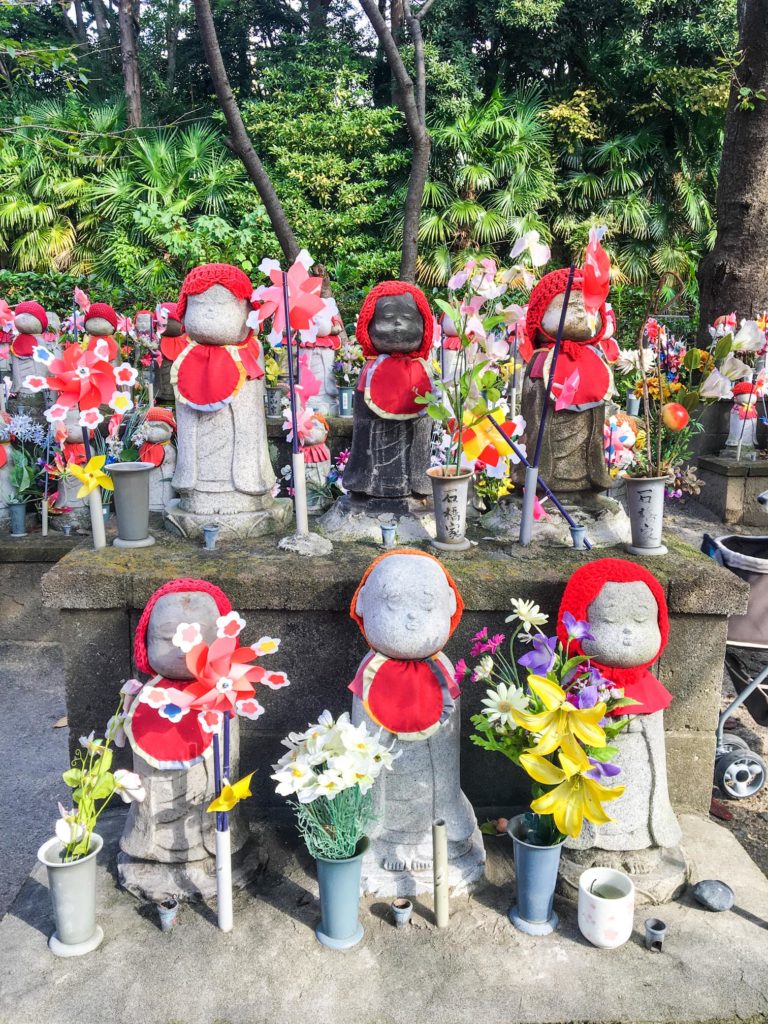
Because of Jizō’s status as protector of travellers, you can spy his visage anywhere and everywhere. On residential streets in Tokyo in Kyoto, you will find him wearing his red knitted bib and cap, sheltered from the rain in a small wooden hut. On the sides of main roads and quiet footpaths, tall grass and bushes obscure his image. Wanderers will find him in gardens, at Buddhist temples, and outside train stations. In fact, Jizō might be the most common sight in Japan, especially for adventurous types.
In her piece for The Japan Times, Amy Chavez talked with Professor Hank Glassman, author of The Face of Jizō. Here, Chavez quotes Glassman’s book when discussing the appearance of Jizō statues: “the power of stones to engage the human heart.” Jizō, as you’ll see when you travel Japan, are almost always made of stone. Any other distinguishing features? As for why travellers often spy Jizō wearing a red knit cap and bib, that’s a more intriguing and complex story.
Jizō in Modern Japan
Today, it is local women who tend to almost every Jizō statue in Japan, who typically dress the statues in red. Red, in Japan, is the colour of safety and protection, and so it makes sense to dress the protector of travellers in that same colour. However, Jizō’s other responsibility explains the reason for his garments specifically being knit hats and bibs.
Jizō is not only the protector of travellers, but also of children; Jizō protects and cares for the souls of unborn, stillborn, aborted, and miscarried children. Pregnant women and mothers of young children seeking protection and safety for their child frequently pray to Jizō statues. He also brings closure to mothers who have miscarried.
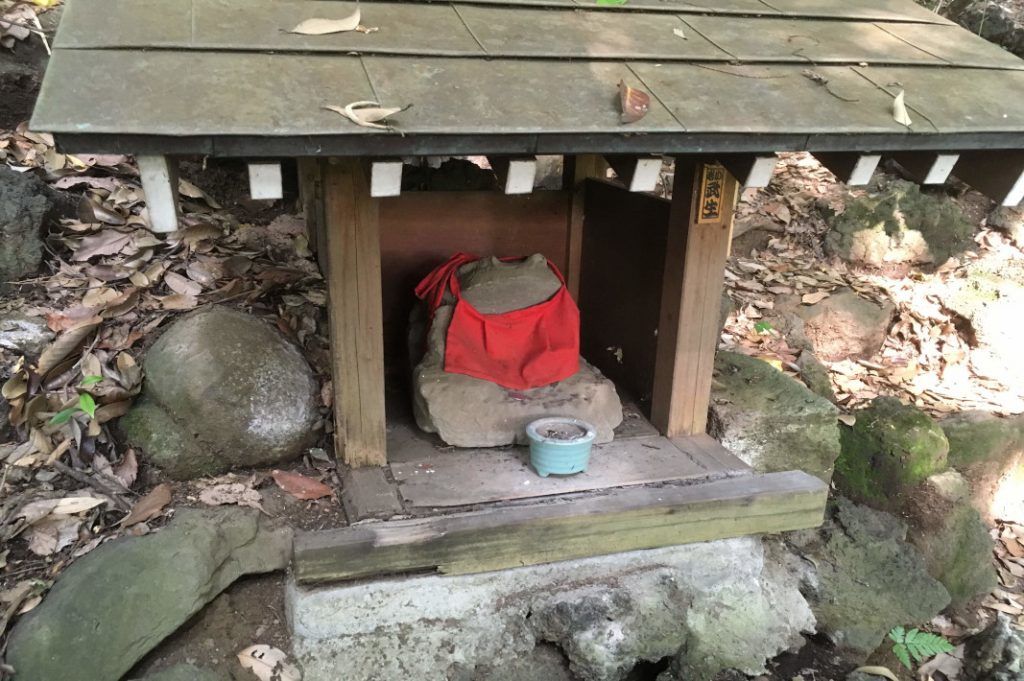
Jizō: Protector of Children
As one article in The Independent puts it: “It is believed that as the babies did not have the chance to build up good karma on earth, Jizō helps smuggle the children into the afterlife in the sleeves of his robe.” Because of Jizō’s role in caring for children, especially those who have died, his carers traditionally dress him in the knit hats and bibs of babies and toddlers.
While Jizō has protected of the souls of both travellers and children for centuries, priority has shifted from one to the other as time has gone on. While you will still find Jizō’s statues in places where travellers may need protection and comfort, it is mothers who pray to them when looking for comfort and closure.
This is perhaps a sign of the times. Travellers are safer now than they’ve ever been, especially in Japan, but mothers who have lost their children will always need comfort and closure. Luckily, Jizō is there to care for all, regardless of their needs.
The next time you find yourself at one of Japan’s Buddhist temples, see if you can spot Jizō. Spend a quiet moment connecting with Japan’s deep culture. Thank Jizō for his hard work, and for that of the women knitting hats to keep him warm. Even though travellers in Japan are more than safe, it never hurts to show him a little appreciation. After all, maybe it’s all down to Jizō’s hard work that Japan is so safe.
Post by Japan Journeys.



